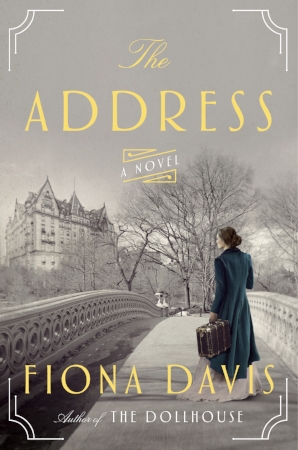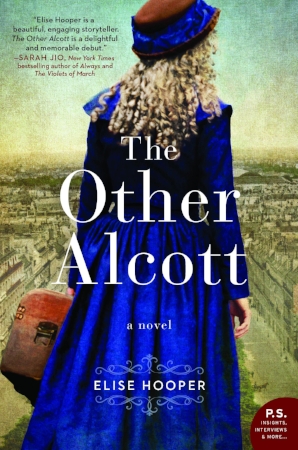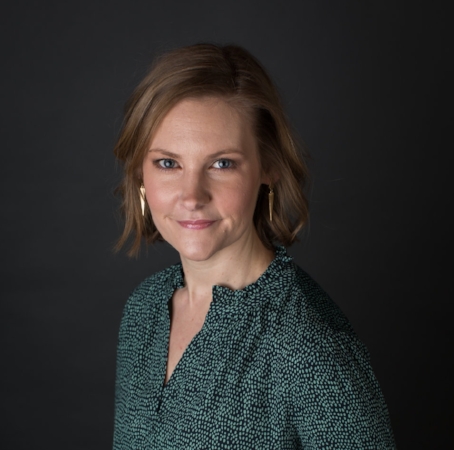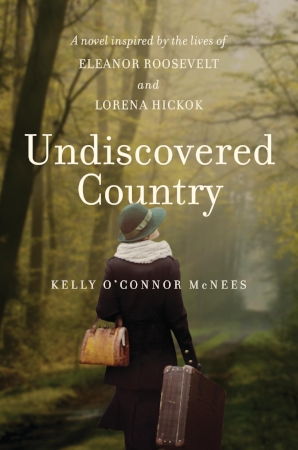WomensHistoryReads interview: Kristin Harmel
What better way to ease into a Monday morning than with a delightful #WomensHistoryReads Q&Q&Q&A? You'll love today's answers (including an adorable childhood photo!) from Kristin Harmel, whose latest novel THE ROOM ON RUE AMELIE will be hitting bookstores tomorrow. Welcome, Kristin!
Kristin Harmel
Greer: What book, movie or TV show would your readers probably be surprised to find out you love?
Kristin: For those of you who don’t know me yet, there’s probably no better (or more embarrassing) introduction to me than hearing me admit my lifelong passion for Superman—the 1978 version with Christopher Reeve, which I was wholly obsessed with as a child. I still watch it with embarrassing frequency. I even wonder, in the back of my mind, whether my decision to become a journalist (and later a novelist) was somehow rooted in a latent desire to actually be Superman—or Lois Lane.
All joking aside, though, I think my obsession with Superman has some common threads with the writer I’ve become. First of all, I do best with stories that are rooted in the issues of family, legacy, and the struggle of good vs. evil, all of which Superman certainly explores. I also like to write strong heroines who are on a journey of discovery, and let me tell you, I think Margot Kidder’s Lois Lane was a pretty amazing heroine, especially considering that she appeared on screen forty years ago. She was a good female role model who had learned to work hard and to not fear asking for what she deserved in life, and I think that’s a journey many of my characters are on too. And now, before I delve too insanely into an essay about why Superman is amazing or how I still swoon over Christopher Reeve’s beautiful blue eyes in that film, please allow me to distract you with a photo of my childhood best friend (Jay Cash) and me, wearing our matching Superman shirts. In case you were wondering, we also owned capes. Naturally.
Greer: An unforgettable introduction! And quite possibly the cutest thing ever. Love it. What’s your next book about and when will we see it?
Kristin: Although it feels as if I’ve been waiting about a thousand years for this book to come out (I suspect every writer feels that way about new releases!), you’ll actually be seeing my next novel tomorrow! (3/27)! I actually can’t believe that the publication day is finally here! It’s called THE ROOM ON RUE AMÉLIE and is the story of an American newlywed, a French Jewish teenager, and a British Royal Air Force pilot whose lives collide in Paris during World War II. It’s based, in part, on some real-life stories of Allied escape lines running through France, including the Comet Line and the Shelburne Line, both of which relied heavily on women.
I had the idea for the book a long time ago, while researching my 2012 novel, THE SWEETNESS OF FORGETTING (which takes place partially in WWII Paris), and I really liked the idea of placing an American woman in Paris at the start of World War II to see how she’d get involved (not least of all because I was an ex-pat in Paris myself during a portion of my twenties). But I was unsure of how realistic it would be to have an American woman living in Paris AND helping out on an Allied escape line without calling attention to herself—until I read about Virginia d’Albert-Lake, an incredibly inspiring woman who was just thirty and living in France in 1940 when the Germans invaded. She helped save the lives of more than sixty American and British airmen before being arrested and sent to a concentration camp. THE ROOM ON RUE AMÉLIE isn’t her story, but she became the jumping off point for Ruby, my plucky American main character, who summoned her courage in the face of danger, just like Virginia did. For both of them, it was about standing up for goodness in the face of evil.
Greer: What do you find most challenging or most exciting about researching historical women?
Kristin: Because Ruby Benoit, the main character of THE ROOM ON RUE AMÉLIE is fictional (and is simply inspired by the real-life Virginia d’Albert-Lake), I think I had a bit of an easier time with researching the character herself. The things she did and said just had to be true to her personality, and historically accurate, rather than having to mirror every single detail of a real woman’s life. But because I’m setting stories in the past, there are so, so many details to juggle to make sure I’m getting things as accurate as possible. For me, the bigger details—movies the main character might have watched, music she might like, a car she might have driven, the operational details of an escape line—are easy. It’s the little details—the color of her lipstick, the way she heats her apartment in the winter, whether she can make phone calls or send mail during wartime, etc.—that are so much harder. I find that as a writer, I have to go through volumes and volumes of information, combing through hundreds of pages of research to find a little detail here or there that can bring a scene alive. And as a former journalist—who was always conscious that fact errors were fireable offenses—I am always incredibly paranoid that I’ve gotten details wrong. I seriously have knots in my stomach even thinking about it now! Writing historical fiction is hard, but I love every second of the journey.
Greer: Agreed, and agreed.
Kristin: Thank you very much for inviting me to answer a few questions today!
Greer: My pleasure!
Kristin: And my question for you: As a writer, do you find it easier to base characters directly on real women from the past? Or do you find it easier to create characters rooted in the past, based loosely on real people? I’m curious to hear your take on the pros and cons of each approach!
Greer: Well, I often struggle with coming up with names for my characters, so at least with real-life people we get to skip that step if we want! But I think loose inspiration is easier in most ways. In a way I had the best of both worlds with GIRL IN DISGUISE, given that Kate Warne was a real-life figure from history but there wasn't really that much information on her in the historical record. We know a few cases she worked on, we know she claimed to be a widow, we know she helped save Abraham Lincoln's life, and that's pretty much it. So I still had plenty of freedom to develop character and plot in almost -- ah, that almost -- any direction I wanted.
My next book was even more loosely inspired by history, in that I used intrepid newspaperwoman Nellie Bly's undercover trip into a notorious mental asylum as a jumping-off point. I felt like I wouldn't bring anything new to the story of a journalist, so instead my main character feigns madness to rescue her sister from the asylum where she's been sent by their parents. That opens a huge number of doors but still grounds my characters in a specific time and place.
Of course the problem with real-life inspiration is that it's so often unbelievable! Apparently it was not that hard to get thrown into a mental asylum in the 1880s, especially if you were poor, or pretending to be. As Nellie put it, "The insane asylum on Blackwell’s Island is a human rat-trap. It is easy to get in, but once there it is impossible to get out.” And that's what my main character Charlotte is up against in Woman Ninety-Nine. She impulsively gets herself committed to the asylum without realizing what she's risking: her future, her sanity and her life.
Read more about Kristin and her books at the links below:
Web: KristinHarmel.com
Facebook: Facebook.com/kristinharmelauthor
Twitter: Twitter.com/kristinharmel
Instagram: Instagram.com/kristinharmel



















